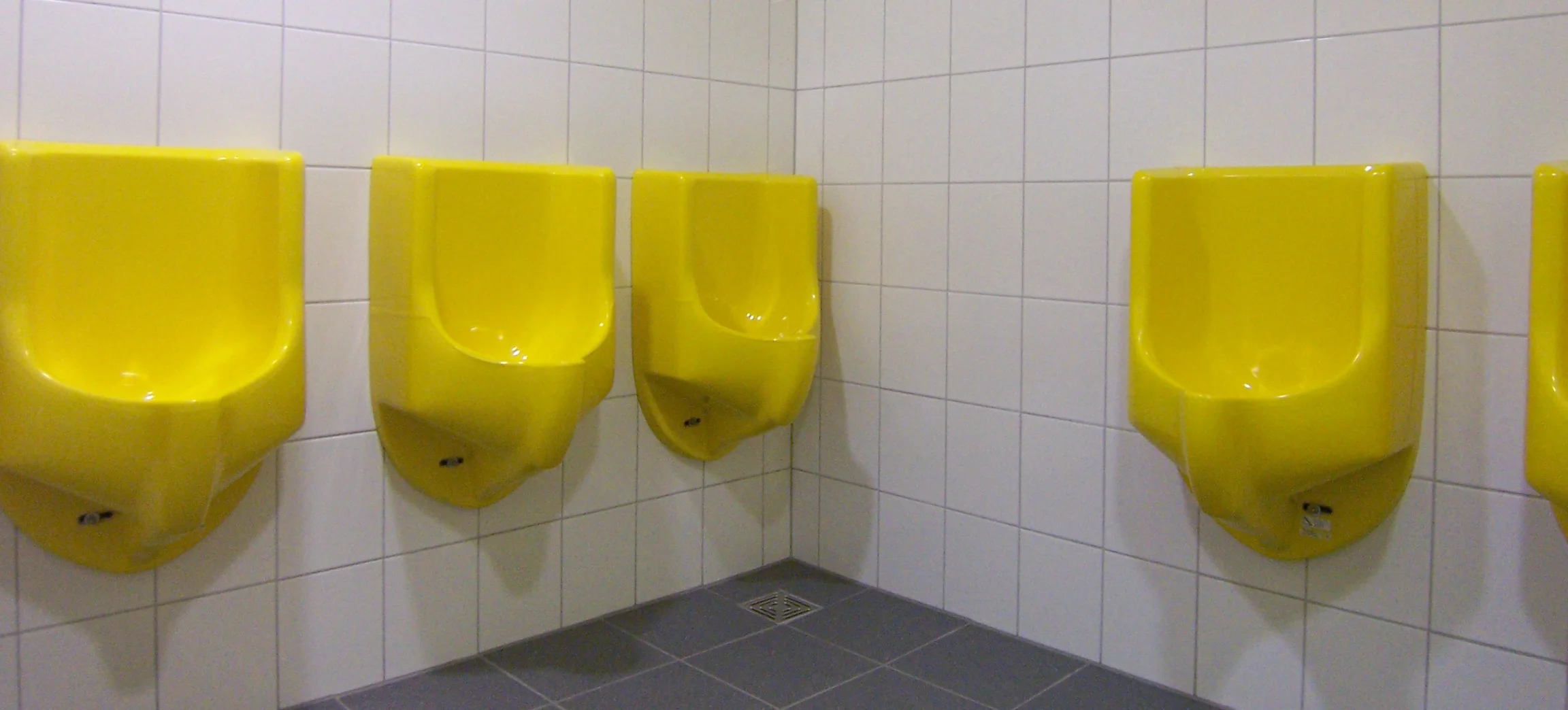Most schools have installed waterless urinals not so much to save water as to help reduce vandalism. The handles, flush valves, plumbing, and piping found above urinals are often the targets of vandals, especially in high schools. Damaged, the urinal can pour gallons of water into the restroom or, the opposite extreme, make the urinal totally inoperable. Either way, repairs are often costly and time consuming.
Most waterless urinal systems have no visible plumbing installed on or above the urinal, which virtually eliminates this target for damage or destruction. All the mechanicals of a waterless urinal are enclosed in the unit.
However, the primary reason most school districts are interested in waterless urinals is, as the name implies, they use no water. The way these systems work is actually quite simple: Instead of using water to flush away urine, gravity drains the urine, allowing it to flow into a cylinder or trap that sits atop the drain area of the urinal, forming a seal.
The cylinder is filled with a thin layer of liquid sealant that prevents odors from escaping into the air. As the urinal is used, the urine overflows into a conventional drainpipe, much the same way a traditional urinal works.
While waterless urinals look and function much liked traditional urinals, the savings to the school district can be substantial:
· Sewer charges are reduced.
· Plumbing costs are lowered since water lines to each urinal are unnecessary.
· No flush valves or sensors are required.
· Installation is usually faster and much easier than installing a conventional urinal.
· They are less prone to bacteria growth because the urinal stays drier than a conventional urinal.
Although the water and other cost savings can be significant, waterless urinals can differ significantly from manufacturer to manufacturer, making it vital for school district administrators to carefully evaluate the different systems available. For instance, though most waterless urinals look essentially the same, the costs to operate the different systems can vary significantly, and in some situations, eliminate the financial rewards the district may have been hoping to recover by installing waterless urinals in the first place.
For example, waterless urinal systems by different manufacturers use a different type of trap/cylinder, which must eventually be replaced with use. In some units, the cylinder lasts longer than in others, requiring less frequent changing. And in others custodians need to clean out the trap, instead of simple replacement.
Some cylinders are also considerably more expensive than others. In fact, the differences are so extreme that some no-flush urinal manufacturer will substantially discount the cost of the urinal, only to recoup the profit on the cost of the trap/cylinder replacement units. For these reasons, administrators are urged to use “due diligence” when selecting a waterless urinal system for their districts.











